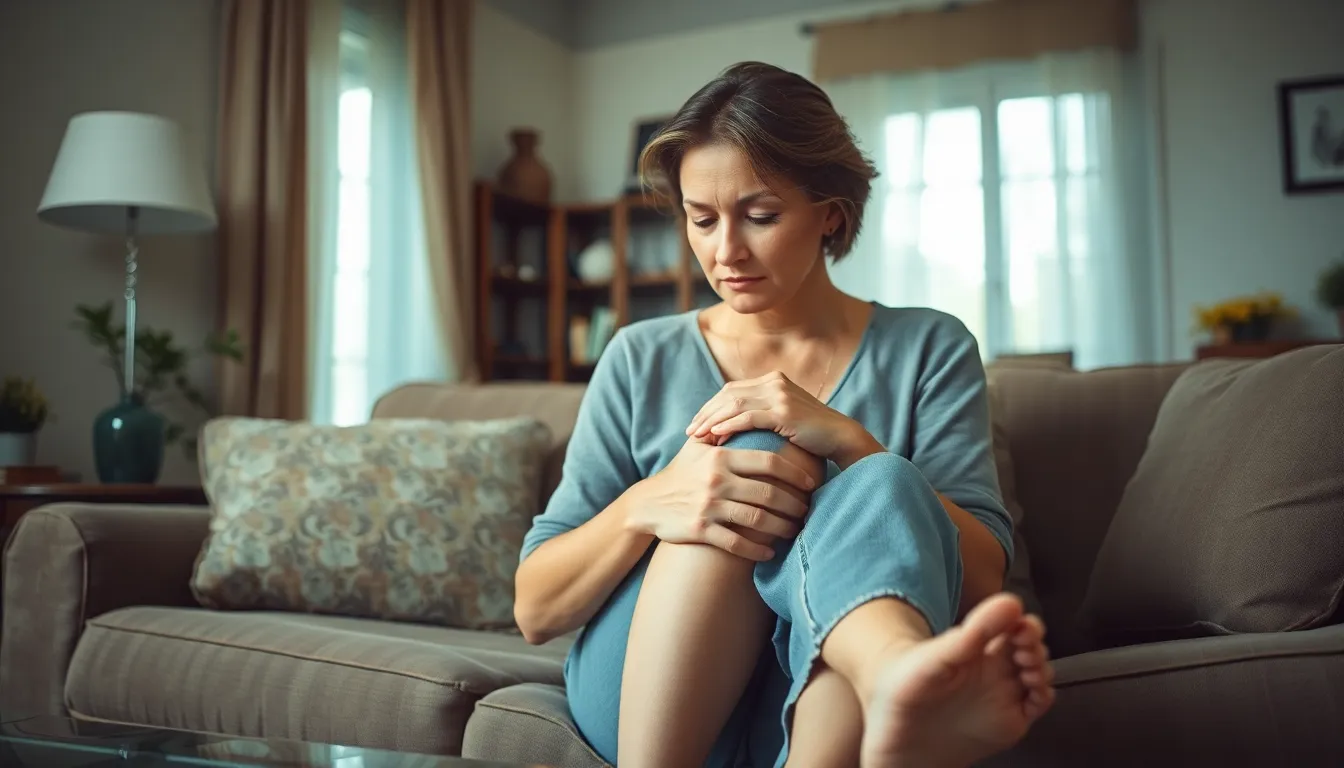Restless Leg Syndrome (RLS) isn’t just an annoying dance party for your legs; it’s a real condition that can leave anyone feeling like they’ve downed five cups of espresso before bedtime. Imagine trying to relax after a long day, only to have your legs suddenly decide they need to perform their own version of the cha-cha. If that sounds familiar, you’re not alone.
In the world of medical coding, RLS has its own special identifier: ICD-10. This code helps healthcare professionals pinpoint the issue and get patients on the path to relief. Understanding this code isn’t just for the pros; it’s essential for anyone looking to take control of their restless nights. With the right knowledge, those pesky leg jitters can be tamed, allowing for a peaceful night’s sleep and a well-deserved break from the dance floor.
Table of Contents
ToggleOverview of ICD 10 Restless Leg Syndrome
ICD-10 categorizes Restless Leg Syndrome (RLS) under the code G25.81. This classification helps in the reliable identification of RLS for clinical documentation and billing. Healthcare providers use this code to accurately describe the condition during patient assessments.
Symptoms associated with RLS often include uncomfortable sensations in the legs, typically resulting in an uncontrollable urge to move them. Increasing awareness of RLS among healthcare professionals has improved diagnosis rates. Incorrect or delayed diagnosis can lead to ineffective treatment plans, which emphasizes the importance of accurate coding.
The condition may complicate sleep patterns, leading to difficulties in achieving restorative rest. Patients often report symptoms worsening during periods of inactivity, particularly in the evenings or at night. Effective management of RLS requires understanding its impact on daily life, which can vary significantly among individuals.
Healthcare professionals should remain vigilant for RLS symptoms, especially in patients reporting sleep disruptions. Timely recognition of the condition can lead to proper treatment options, enhancing patient quality of life. By utilizing the G25.81 code, clinicians ensure accurate medical records, allowing for tailored therapeutic approaches.
Familiarity with the ICD-10 code for RLS is crucial for healthcare providers. Enhanced awareness leads to better management strategies for patients grappling with this challenging condition. Understanding the significance of accurate coding in clinical settings fosters improved health outcomes for individuals affected by RLS.
Symptoms and Diagnosis


Restless Leg Syndrome (RLS) features a range of notable symptoms that can disrupt daily activities and sleep patterns. Identifying these symptoms helps in early diagnosis and treatment.
Common Symptoms of Restless Leg Syndrome
Unpleasant sensations in the legs rank as the primary symptom of RLS. Many patients report feelings described as crawling, tingling, or burning, particularly when at rest. Discomfort increases during evenings and nights, prompting an irresistible urge to move the legs. Movement often provides temporary relief, allowing individuals to manage symptoms better. Fatigue can occur due to disrupted sleep, exacerbating daytime drowsiness and impairing concentration.
Diagnostic Criteria in ICD 10
ICD-10 criteria for diagnosing RLS incorporate specific symptoms and patient history. Diagnosis typically requires patients to experience urges to move their legs accompanied by uncomfortable sensations. Symptoms must occur primarily during periods of inactivity and ease with movement. The healthcare provider should assess how these symptoms interfere with sleep and daily activities. Proper documentation under the ICD-10 code G25.81 aids in managing treatment plans and ensuring continuity of care.
Treatment Options
Various treatment options exist to manage the symptoms of Restless Leg Syndrome (RLS). These approaches often combine pharmacological treatments with non-pharmacological interventions.
Pharmacological Treatments
Medications play a vital role in alleviating RLS symptoms. Dopamine agonists like pramipexole and ropinirole often provide relief by enhancing dopamine levels, thus reducing discomfort. Opioids may be considered for severe symptoms, offering an alternative when other treatments are ineffective. Additionally, anticonvulsants such as gabapentin have shown effectiveness in managing pain associated with RLS. Regular follow-ups with healthcare providers ensure treatment plans remain tailored to individual needs and adjust as necessary.
Non-Pharmacological Interventions
Non-pharmacological strategies serve as effective complements to medication. Regular exercise, especially before bedtime, helps reduce symptoms and improve sleep quality. Lifestyle modifications, such as reducing caffeine and alcohol intake, can significantly impact symptom severity. Establishing a bedtime routine promotes relaxation, making it easier to fall and stay asleep. Techniques like leg massages and warm baths before bed offer comfort and may ease the urge to move. Staying informed about RLS and maintaining communication with healthcare professionals supports a comprehensive management plan, enhancing overall well-being.
Impact on Daily Life
Restless Leg Syndrome (RLS) significantly affects various aspects of daily life for those who experience it. This condition disrupts both relaxation and sleep, ultimately diminishing overall well-being.
Quality of Life Considerations
Quality of life declines for individuals dealing with RLS due to persistent discomfort and sleep disturbances. Chronic fatigue results from frequent awakenings at night, leading to reduced productivity during the day. Struggles with concentration become common, impacting work performance and daily tasks. Many experience heightened stress levels as they adapt to managing their symptoms. Relationships may also suffer as people find it harder to engage in social activities or maintain emotional connections. Overall, untreated RLS can hinder one’s ability to enjoy life.
Social and Emotional Effects
Social interactions often take a hit when RLS symptoms disrupt normal routines. Friends and family might not understand the challenges posed by RLS, leading to feelings of isolation. Anxiety can emerge from the fear of symptoms worsening in social settings, prompting individuals to withdraw. Frustration with fluctuating symptoms may lead to negative self-perception or low self-esteem. Many find it challenging to maintain a positive outlook when chronic symptoms linger. Emotional well-being is crucial, as managing these effects requires awareness and support from loved ones.





